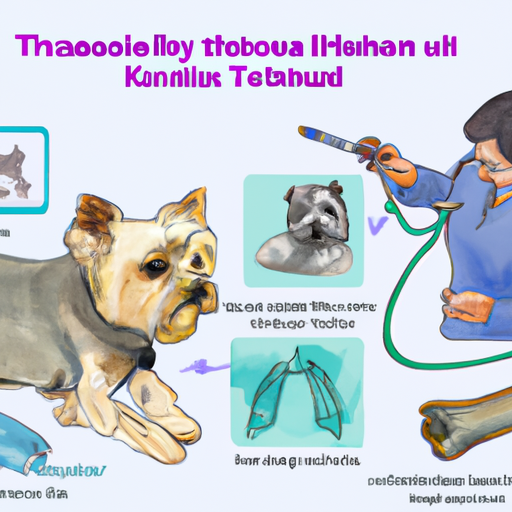Your dog is your best friend. They’re there for you in good times and bad, and it’s only natural that you want to do everything you can to keep them healthy and happy. But what do you do when your furry friend is diagnosed with tracheal collapse? It can be a scary diagnosis, but with the right treatment and care, your pet can continue to lead a happy life. In this guide, we’ll cover everything you need to know about treating tracheal collapse in dogs.
Understanding Tracheal Collapse
Tracheal collapse is a common condition in small breed dogs. The trachea, or windpipe, is a rigid tube that carries air to and from the lungs. In dogs with tracheal collapse, the trachea becomes weak and can collapse, making it difficult for the dog to breathe.
Symptoms often include:
- A harsh, dry cough
- Difficulty breathing
- Gagging or retching
Treatment Options for Tracheal Collapse
There are several treatment options available for tracheal collapse, and the best one for your dog will depend on the severity of their condition.
-
Medication: For mild cases, your vet may prescribe medication to reduce inflammation and ease your dog’s cough. This can include
- Cough suppressants
- Steroids
- Antibiotics for secondary infections
-
Weight management: Overweight dogs are at a higher risk of tracheal collapse, so maintaining a healthy weight can help manage symptoms.
-
Surgery: In severe cases, your vet may recommend surgery to insert a stent into the trachea to keep it open.
| Treatment | Pros | Cons |
|---|---|---|
| Medication | Non-invasive, can reduce symptoms | Does not fix underlying problem |
| Weight management | Can prevent further collapse, improves overall health | May not be enough for severe cases |
| Surgery | Can permanently fix collapse | Invasive, potential complications |
Caring for a Dog with Tracheal Collapse
If your dog has been diagnosed with tracheal collapse, there are several steps you can take to make them more comfortable.
- Switch from a collar to a harness to avoid pressure on the trachea.
- Avoid exposure to irritants like smoke and dust.
- Encourage quiet, calm behavior – excitement can exacerbate symptoms.
Preventing Tracheal Collapse
While there is no surefire way to prevent tracheal collapse, there are things you can do to reduce your dog’s risk. Keeping your dog at a healthy weight is crucial, as obesity can exacerbate the condition. Regular check-ups with your vet can also help catch any potential problems early.
Frequently Asked Questions
Q: What breeds are most at risk of tracheal collapse?
A: Tracheal collapse is most common in small breeds, like Yorkshire Terriers, Pomeranians, and Chihuahuas.
Q: Can a dog live a normal life with tracheal collapse?
A: Yes, with proper management and treatment, many dogs with tracheal collapse can lead happy, normal lives.
Q: How is tracheal collapse diagnosed?
A: Your vet will likely use a combination of physical examination, history, and X-rays to diagnose tracheal collapse.
Remember, while this guide provides a good starting point, it’s always best to consult with your vet for the most accurate information and treatment options for your pet.



